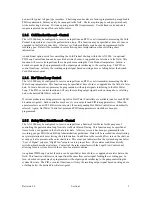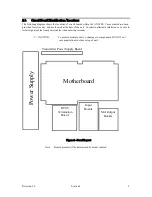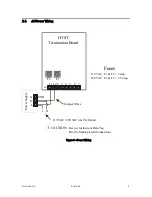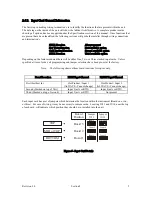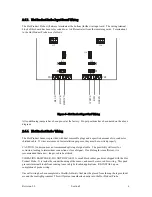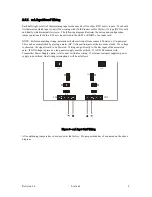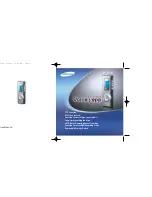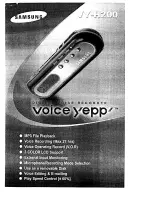
1.2.
AV-9900 Description
The AV-9900 High Temperature Short Time Controller provides all USPHS required functions associated
with recording pasteurized product temperature, signaling the flow diversion valve (F.D.V.), and recording
the Flow Diversion Valve position. Addition features allow for multiple diversion set-points, recording
active setpoint, cold product recording - with optional control, and hot water control.
1.3.
AV-9900 Features
1.3.1.
Hot Product Temperature Sensor
The Hot Product Sensor is a dual element, 1000ohm Resistance Temperature Detector (RTD). The
Primary RTD supplies the recording - thermal limit signal input, with the Secondary RTD supplying a
verification signal.
Sensors are available with a wide variety of sanitary connections featuring a 5-1/2” or 7-1/4” probe length.
Provision for the
Health Authority Seal
on the stainless steel conduit housing provides separate servicing of
the probe, and ease of installation. Overall response characteristics allow for cable runs of up to 500 feet.
Chart ranges are programmable, and are factory set to meet all Pasteurized Milk Ordinance (PMO)
requirements. In addition, criteria of 12 hour rotation, linear, and 1
O
F divisions have been met.
1.3.2.
Diversion Switching
Diversion set-point circuitry provides for up to five selectable cut-in/cut-out temperatures. User
configurable parameters exist for displaying the active set-point. The current set-point is recorded to the
chart for verification at time of cut-in. Diversion set-point values are easily modifiable upon breaking the
Health Authority Seal, and entering the system program mode. In addition to restricting access to the
Run/Program shunt jumper, the chart plate seal prevents modifications to circuit boards and input/output
wiring connections.
Flow Diversion Valve position is indicated by red and green lights on the chart plate, in addition to being
recorded by an event pen on the outside area of the chart. The event pen position is outward for forward
flow on all diversion set-points. Selection of the current diversion set-point is accomplished via the front
mounted user keypad and display. Five function keys become active, allowing the user to choose the
desired set-point.
1.3.3.
Diagnostic Circuitry
The AV-9900 provides fail-safe operation via internal self-diagnostics of the Hot Product Probe input
signals. The Primary RTD input signal is continually referenced against the Secondary RTD signal. The
result is indicated on a series of LED’s, located just above the user display, and labeled
Sensor Balance
. If
both RTD elements are in agreement by less than .5
O
F , no LED’s are lit. Each increment of .5
O
F error
will light an LED. At the point at which the elements differ greater than 2
O
F , the AV-9900 will go into
automatic divert. In addition, the user display will indicate that a
Probe Failure
has taken place. Until a
replacement Hot Product Probe is installed, the unit will not allow a forward flow condition to take place.
1.3.4.
Pen Drive Mechanism and Chart Printing
The pen drive mechanism is similar to a dot-matrix print device in that a series of dots are placed down
onto the paper chart. This mechanism is fully alpha-numeric capable allowing printing of ranges, units,
alarm’s, etc. to the chart. All four pens are housed with a small pen cartridge in a straight line
arrangement. As a result, all data printed to the chart is on the same time line. No lag exists from pen to
Revision 3.0
Section 1
2





